How To Rate Camera Work And Lighting
Cinematography Schoolhouse: Analyzing Lighting Ratios
What is a Lighting Ratio in Cinematography?
When I talk about Lighting Ratios in cinematography I am referring to the measurement of the corporeality of light illuminating one area or object in the frame compared to the corporeality of calorie-free illuminating another object or area of the frame.
Cinematography is a very complex art and there are an endless number of lighting possibilities but agreement ratios and unremarkably used ratios can help a cinematographer develop a visual language across a project.
Lighting ratios for cinematography aren't concerned with the number of lights or the types of light (soft/difficult) but rather how much light is falling in 1 surface area vs. another area.
Understanding the effects of lighting ratios tin make yous a more efficient and more than effective visual storyteller. Every bit a cinematographer you are painting with light and to get the results you lot are looking for you need to have a firm understanding of the principles you are trying to manipulate.
What Are the most common Ratios Cinematographers track and employ?
1. Central to Fill
The nearly mutual ratio that cinematographers mensurate when shooting is the Key to Fill ratio.
In this case the term "Central" is referring to the amount of calorie-free coming from the Key Light in the scene. The key light in any given scene is the light that is providing the main illumination for your subject. The central light is also the virtually common light used for setting your exposure on the lens (setting you shooting stop).
The Fill up refers to the fill low-cal level in the scene. The fill calorie-free doesn't have to really exist a light.
The make full light levels can come up from a bounce, or general abmient light, or information technology tin be negative fill. The term Make full as used here just ways the opposite side of the Primal.
The Key to Fill up ratio is most unremarkably discussed when lighting people. For example, lets take a await at this shot of Jude Law.
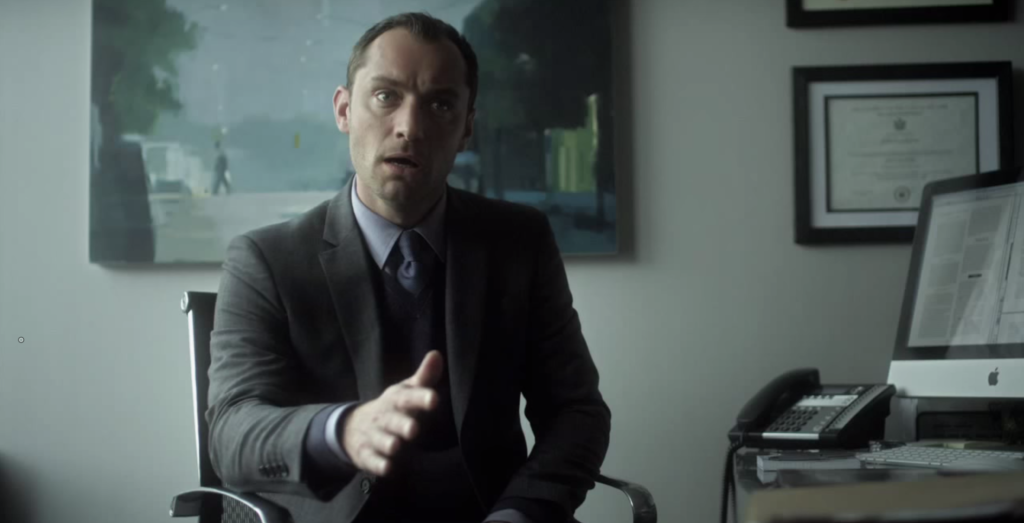
This is a unproblematic close up in an office and you can quickly see the Central low-cal is coming from photographic camera left and providing the light on the camera left side of Jude's face up.
The make full side is on Photographic camera correct. The make full doesn't look to exist generated from another light in this example.
It could exist from the key light bouncing of some poly board or white card or there may not be whatever bounce at all and it could exist coming from the walls of the set up.
Either mode, to measure the key to fill ratio you would measure the amount of calorie-free falling onto Jude'south key side (the camera left side in this example), write it down, then measure the amount of calorie-free falling on the fill up side of Jude's face (photographic camera right in this instance) and compare the two.
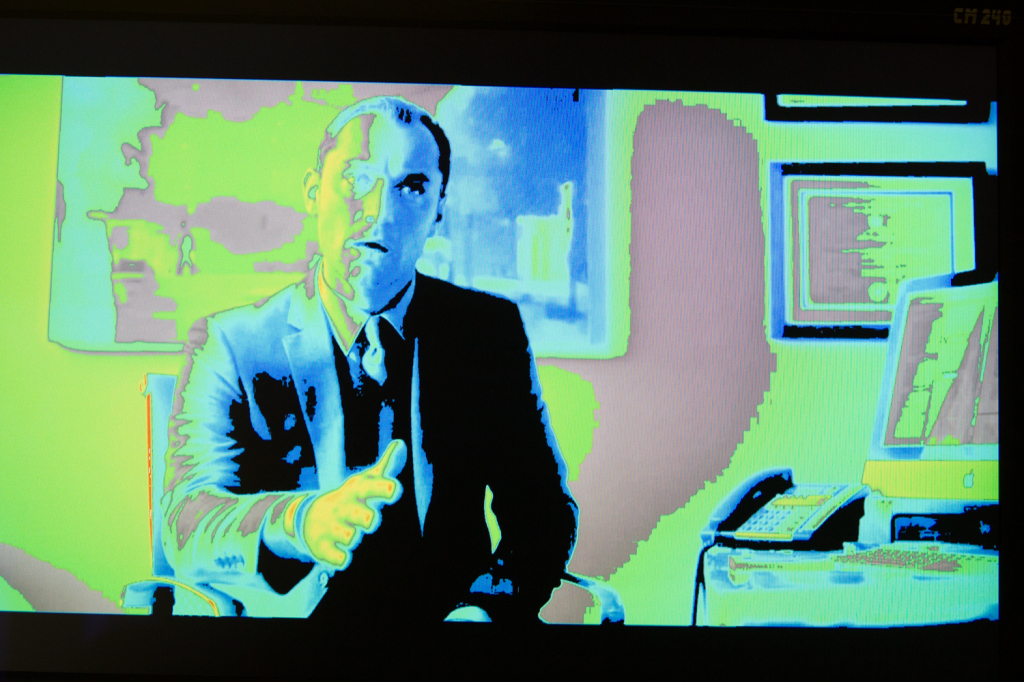
In this example it looks to exist about a 8:ane ratio in terms of low-cal levels or iii:1 ratio in terms of stops levels. Nosotros will get into the specifics of working in lite levels or stops levels later on on in this commodity. For now we will piece of work in my preferred terminology which is Stop Levels.
Using stop levels when talking nearly ratios means yous are comparing the light levels in stops of light. For a definition on what a finish of lite means you tin check out these helpful links:
Stops of Light
What is a Stop?
Cinematography & Stops
So in our example the fundamental light is reading 3 stops brighter than the fill light if we were to be measuring with a calorie-free meter on set. At present that we know that if nosotros wanted to reproduce this shot or a shot with a similar light/nighttime feel to it we now know that we would need 3 times the amount of low-cal on the key side compared to the make full side.
2. Key to Groundwork
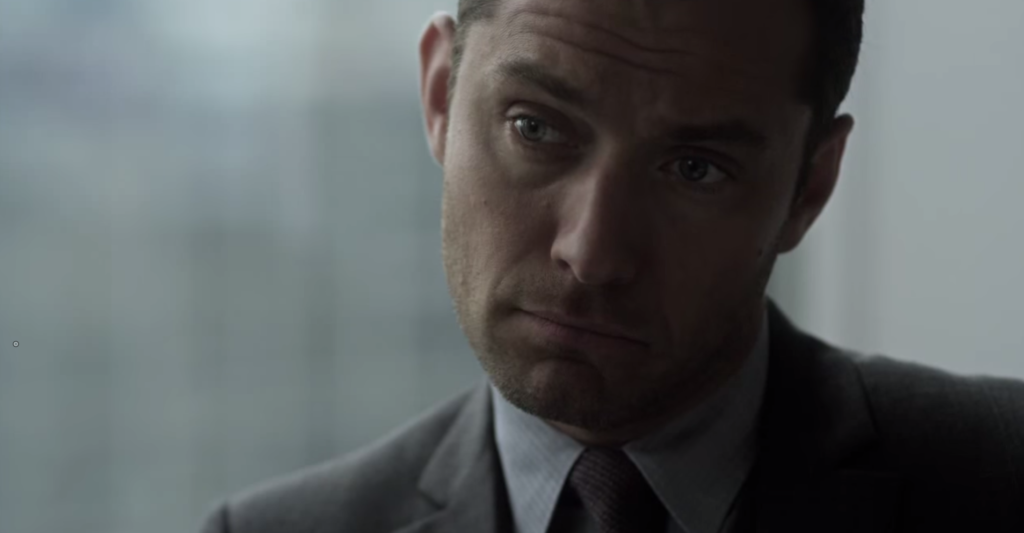
The second major ratio a cinematographer needs to be aware of is the Fundamental to Background ratio. As in the previous example the cardinal refers to the primary light illuminating the scene.
If nosotros once more utilize the example of Jude Law we know the central light is coming from the photographic camera left side. The amount of calorie-free coming from the primal lite is irrelevant as we are talking in terms of ratios. This is where the power of ratios comes in handy.
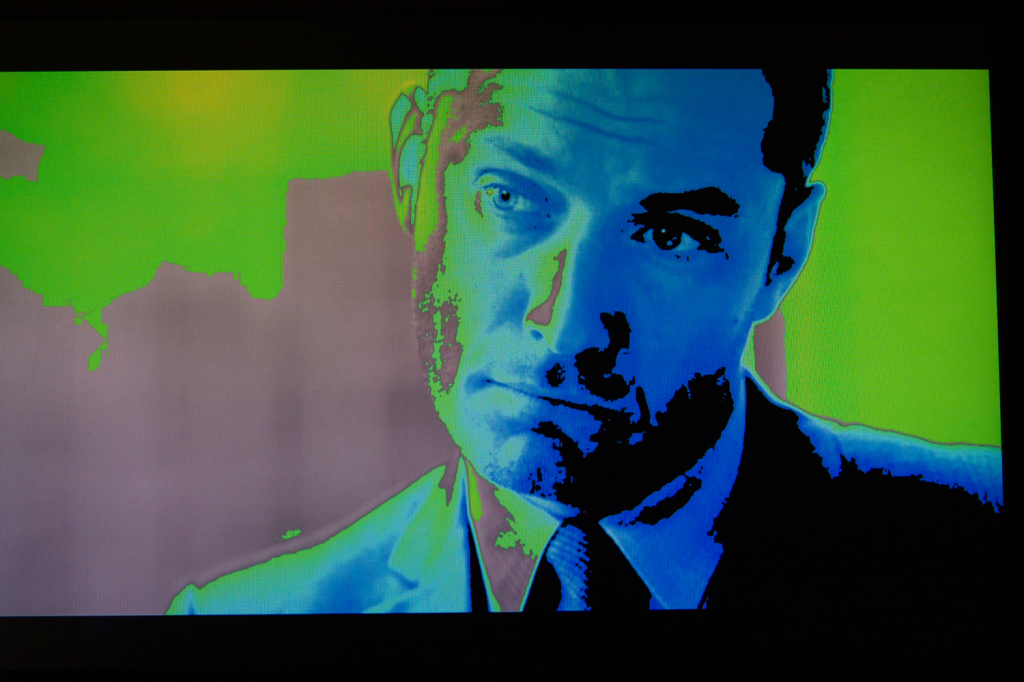
If you want to shoot a scene at T2.8 you can figure out how much light you will need to get a key light to read T2.viii by factoring in your ASA (ISO) rating of your camera and the shutter speed you are using. From there you lot can then know exactly how much fill up light you will need considering you lot know the ratio you lot are going for.
The Key to Background ratio works but like the Key to Make full Ratio only its implementation tin be a bit broader. In the Key to Background ratio y'all measure the Key Light and so measure the background every bit a whole. About of the time in dramatic film and television receiver work the background will be i or 2 stops under Fundamental but that is a very broad generalization. The Key to Groundwork ratio sets the mood for the viewer and tin can assist a cinematographer shape where he or she wants the audience to focus their attending in a given frame.

If we once more focus our attention on our earlier example we can mensurate the cardinal light of the scene and and so measure the background of the scene. When we practise that nosotros see that the groundwork is reading at Cardinal on the left had side of the frame and and so dropping to one and a half stops under on the right. There are no objects in the background over central.
This is powerful knowledge.
We are now armed with a deep agreement of what information technology takes to replicate a visual language like the i being projected in this case.
Then at present that yous know what the two big ratios are to consider when on set how can you use them in your work?
Commercial Cinematography Course: The Foundation

If y'all similar this type of content and you are looking to get up to speed with the concepts we discuss in this breakdown and all of our other podcasts so this is the form for you.
The Commercial Cinematography Course provides an actionable blueprint for young cinematographers to get their caput around the commercial manufacture and maximise the pre-production procedure of any projection.
I am super proud of the course and the response from everyone has been fantastic.
If yous are interested in learning more you can see the entire course outline here:
Commercial Cinematography: The Foundation
Using Lighting Ratios to Take Your Work to the Next Level
i. Pre-production
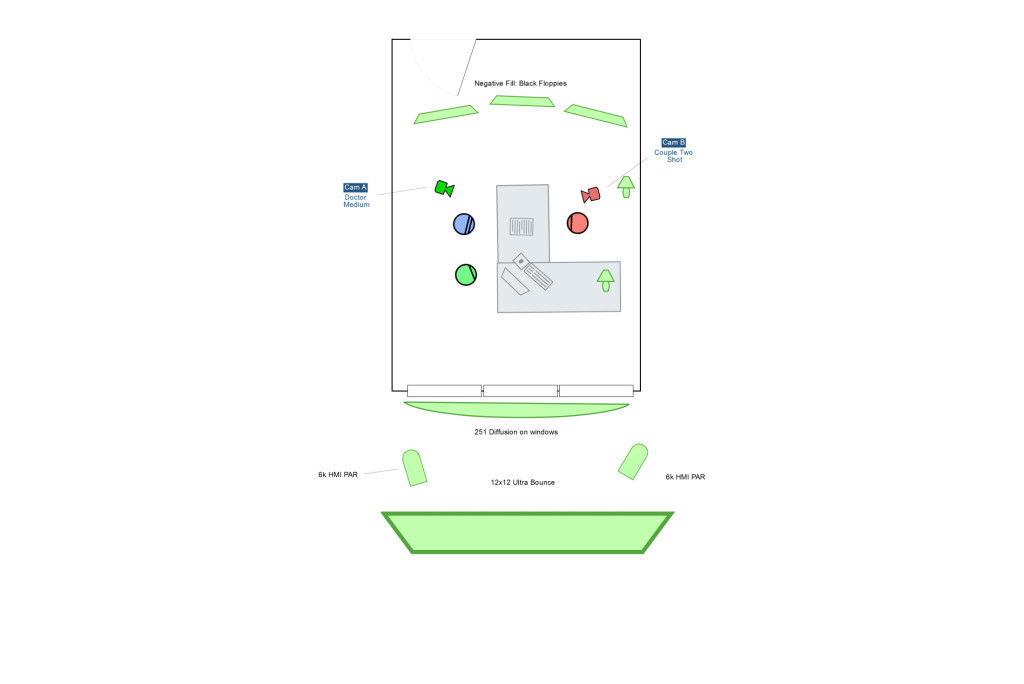
Pre-product is a very of import stage for establishing a visual language. Ratios play an of import role in the style of a slice and deciding on appropriate ratios for a project and for specific scenes can assistance make y'all improve prepared on the solar day of shooting.
Directors generally speak in terms of mood or reference. They may sit with the DP in preproduction and look over stills or other films and talk their mode through them.
A skilful DP volition know how to translate a managing director's language into data that cn assist bring their vision to life.
If a director says they like a certain shot for the nighttime mood this can be interpreted into actual numbers by a DP. You can immediately place the Cardinal to make full Ratio and the Key to groundwork ratio.
The more references the manager brings up the more and more than you will offset to see a specific central to fill up and key to background ratio become.
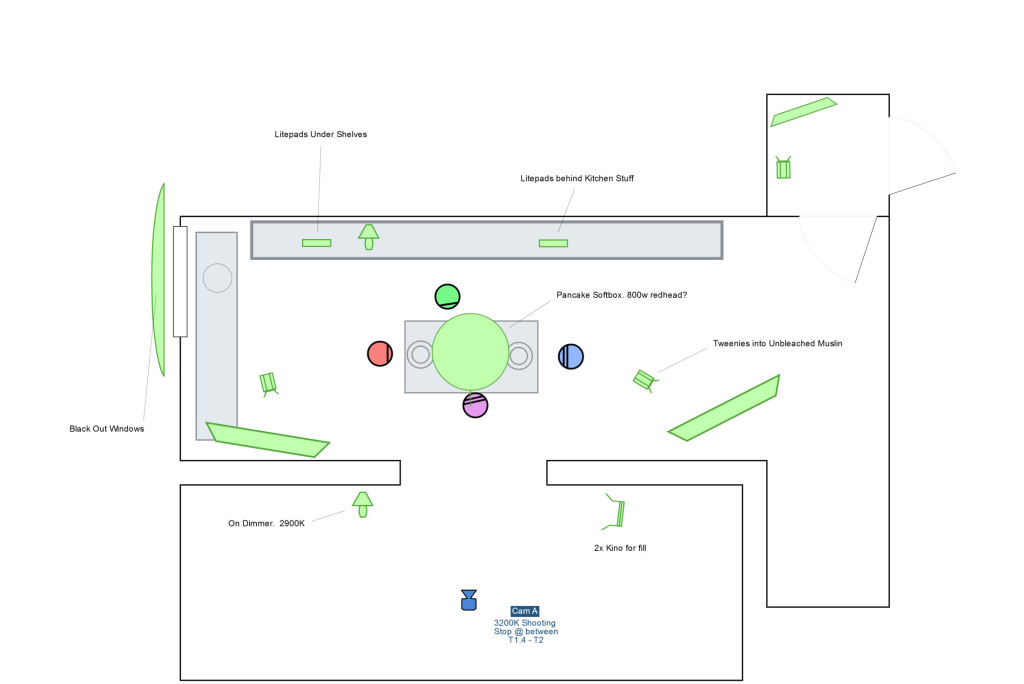
Knowing verbal numbers will help you communicate more clearly with your team and will speed up your workflow. Time is the abiding enemy of the DP and any chance you find to maximize your return on fourth dimension you should take reward of information technology.
Once you get a sense of what the director is looking for you can and then employ the ratios yous have established to aid plot out the tools necessary to become the task done. In combination with location scouts you tin can use the ratios to determine exactly how much level you are going to need from your lights. The gaffer can then program on what tools they will need to bring along to make sure you get the await yous are after.
For example, say you lot desire a Fundamental to groundwork ration of 2:1 stops and you are shooting an exterior location.
This means you lot want the background 1 terminate under central. Y'all and the gaffer now know that you will accept to either await for a darker background or if that isn't possible you will have to brighten your central to get the ratio where you lot desire it. Mayhap you can wing a silk to bring down the sun on the actor and and so bounce an HMI in to model and throw a double cyberspace in the background to have it down 2 stops.
Knowing your ratios volition save you fourth dimension by knowing exactly what kind of gear you are going to need to get the look you want.
On Set
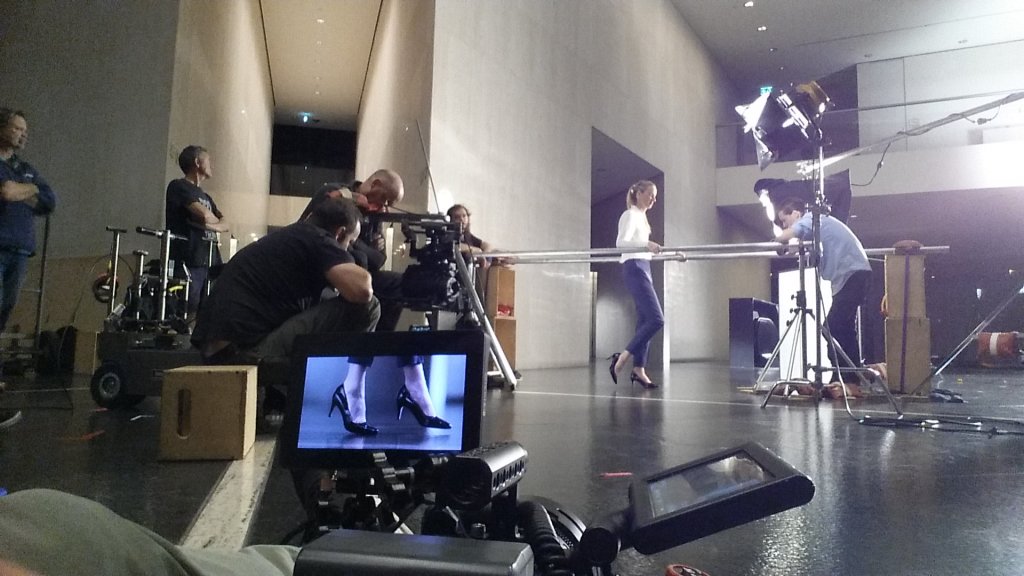
Ratios help you lot communicate on set up. Verbal numbers are articulate and concise and there is very little need for explanation which can speed up your lighting set ups.
Let's talk virtually advice with your gaffer.
Which of these examples is more clear?
Take the background downwards a little flake and bring the key lite up a lilliputian.
or
Take the groundwork downwardly a stop and a half and bring the key up to two.8.
The reply is obvious. The more than blackness and white you lot tin communicate your desires, the higher % adventure y'all are of your coiffure being able to produce the results you are looking for.
Some other great thing virtually knowing ratios y'all like is the ability to prelight in your head.
Practice you similar 3:one on actors, 2.v:1 on actresses and a Thousand:B (Key to Groundwork) of 3:1 for a specific scene? Knowing that yous and the gaffer can light without the camera. While everyone else is waiting on the camera & talent you lot can exist putting the finishing touches on your set ups which will give the director more time to nail performances.
What Can't Ratios Tell Y'all?
Ratios are great but they don't solve all the challenges of a lighting set up up for a DP. Ratios assistance with the mood merely there are a number of other factors that need to be considered equally well.
one. Type of Lighting:
Soft light vs. Hard Light. Ratios can't help you determine whether to use soft low-cal or difficult lite. You have to know what the differences are and when to employ them.
ii. Direction of Lighting
Ratios can't aid y'all determine where the Key light should be coming from.
iii. Colour
Ratios are no good for color. You have to develop your project and empathize how the colour temperature of lights impacts mood and feeling.
4. Cease All and Exist All
Ratios are great for preproduction and communicating with crew but they are hard and fast rules. They are guidelines that can help yous maintain consistency in your project but that doesn't mean y'all need to follow the patterns every prepare.
Studying ratios tin can be helpful to any cinematographer simply what is the best way to go almost finding out which ratios you like?
Every cinematographer is dissimilar and people simply starting out should realize that there is no hard and fast respond to which ratio is the proper ratio for a given scene. There are cinematic tendencies and patterns that are used but ultimately the choice of ratios is up to you.
Cinematography School: Tools to Larn more Almost Ratios
The rise of modern technology has made it easier than ever for aspiring cinematographers to learn how the greats are lighting and in this department I want to go over a few of the dissimilar menthods for learning lighting ratios.
We will start with the method that has been effectually the longest and then I will go into exactly how I report lighting ratios for my projects using all the modern gear at my disposal.
The Calorie-free Meter
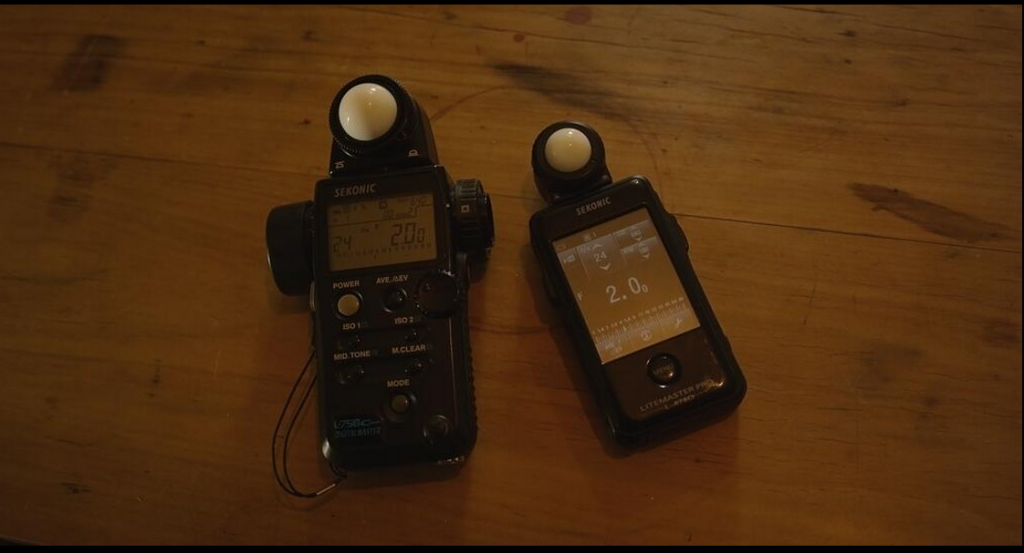
The Low-cal meter is the original ratio tool. The incident meter and the spot meter are both smashing ways of analyzing lighting ratios.
For the Key to Fill up light it is a adequately straight forward process to mensurate the ratio. Y'all have a reading of the key side of your talent in the shot, then you accept a reading on the fill side of your shot.
Voila.
You accept your key to make full ratio.
To get the Fundamental to Background ratio yous tin apply the incident meter reading of the Fundamental you got when you were measuring the Key to Fill, lets say T4 for this example, and you can spot meter different areas of the background to determine the K:B ratio. If y'all spot meter the wall behind the field of study and it reads T2.8 y'all know the background wall is one end under key.
If you spot the window behind the talent and information technology reads T11 you know the window is three stops over cardinal. If that is to high for yous and the mood you lot are going for you know you have to bring that window calorie-free down by a certain number of stops.
The lite meter is still a fantastic tool and something I use on every shoot but information technology does have its limitations in helping you learn what kind of lighting and what kind of ratios you prefer.
The biggest upshot is that yous can't meter a movie on your TV or a still on your figurer.
It just doesn't piece of work.
And so in social club to learn what kind of ratios you prefer you have to really do the set ups yourself and work your style through them. This isn't e'er possible and it certainly isn't very convenient if y'all are merely starting out.
The advent of other exposure technologies though has taken ratio learning to a whole other level.
I still recommend getting a meter both incident and spot and learning how to utilise them.
They are still invaluable to cinematographers and many still use a meter equally their but method for measuring light.
The New Moving ridge
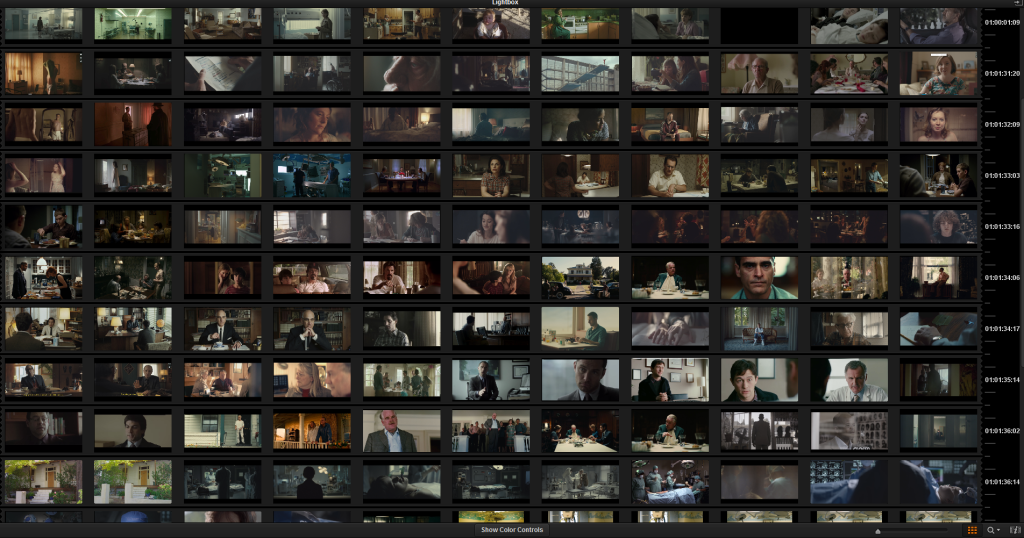
The light meter is great but what about taking this whole ratio learning thing to the next level? Well that is exactly what I set up out to exercise non too long agone.
I wanted to find a way to clarify what others had done in the most effecient and accurate way possible and I came up with a method that I think fit the bill. Here it is:
one. Gather What You Similar
The offset stride is fairly unproblematic. You become out and find photos or clips that you like. Assemble as many as you can. You desire a wide diverseness of situations and settings. The more images and clips you amass the better you will empathize later what it is you actually like.
The way I work is I will scan sites similar youtube and vimeo and use a program called Jing to have screen grabs of images I similar. Jing is gratis and because I am a PC guy it works great. Y'all can utilize any screen grab tool y'all want though in reality. Simply go the highest quality screen captures you can.
Another method is to go to screen catch websites like Evan Richards blog or Cinema Squid.
Evan Due east. Richards – Cinematography Frame Grabs
Movie theatre Squid – Cinematography Stills
From these sites you can download high quality stills from your favorite movies.
2. Become the Stills Into Resolve
After you take gotten all the images yous want to report y'all tin apply Resolve Lite (FREE!!) to get them all in one place. Resolve is super powerful and there are a lot of neat built in tools that you tin use to analyze the images in Resolve but I stay abroad from things like waveform and RGB Parade.
I have got a background every bit a colorist and for me, when I am trying to study ratios, I want the clearest and easiest reply to my questions. That is why I use another tool not found in Resolve.
three. Simulated Color
After I have brought my stills into Resolve and I have loaded them into an empty timeline I feed them out of my calculator onto a reference monitor. The reference monitor I take is a Flemish region FSI CM240 Grading monitor. It is an crawly monitor and I love it.
The bang-up thing about the CM240 besides the beautiful motion-picture show quality is the congenital in tools. The monitor comes with a mode called False Color fashion.
In False color mode the monitor turns the IRE levels that it is being fed through Resolve and turns them into colors based on their effulgence.
Nail!!!
Talk about easy. At present I tin can take a still from a movie, salve it using Jing, load information technology into Resolve, pump information technology out to my Flanders monitor, and immediately run into actual levels that were used to capture the mood and lighting of a scene. Talk about centre opening.
It is like you are seeing backside the curtain.
The Simulated Color mode really makes a big difference because it makes it so piece of cake to identify different stop values and the different areas of an prototype that are to a higher place or below key. Using the false colour I tin can start to see patterns of the ratios that I like. I tin can wait at 1000s of images and scan ratios in a matter of seconds.
In one case you get good at it y'all don't even demand the false color but since I am still working at it the Simulated colour has been incredible.
Very powerful stuff.
four. Putting the Knowledge Into Exercise
Now comes the moment of truth. I have got the knowledge simply how tin I apply information technology to help my projects?
Easy.
I take the Flanders in the field with me on set, I take the notes I've fabricated on what ratios I desire and what I like for each set up or scene, and so I make certain everything is good on the false color while I am setting upwardly the lights. It is incommunicable to not become it correct. You lot clarify plenty images and you take measurements of what you lot like and you tin can't miss.
You nonetheless have to determine on the things ratios tin't tell you like I mentioned earlier in this post.
Things like lite softness, direction, and color merely information technology definitely helps get you started.
The whole reason to exercise this sort of written report is non to re-create someone elses piece of work. Far from it actually.
The part of cinematographer is composite into part technician and role creative person. You cannot brand the art unless y'all know the technical details. Can yous make pretty pictures without doing whatever of this? Of class, just I am non talking well-nigh making pretty pictures.
I am talking most developing a mastery of controlling and manipulating light and emotions. To heighten the game y'all have to know what others have washed before you. Why not apply the cognition they have acquired to assistance boost your work to the side by side level and conitnue to push the fine art course further.
Knwoing what opthers have done you tin can so build your own style and your own language. Once you lot know the tools and the formulas then you can interruption them and shake them upwards to suite your projects and your taste.
Cinematography School: Existent Globe Examples
I want to take y'all through a few more examples to show you how this whole method of learning cinematography works.
To get the almost out of the images below yous have to know what you lot are looking at. The FSI False Color is user adjustable (one of the reasons information technology is then powerful) and they mode I have set it upward reads like this.
RED = 3 Stops Over
Yellow = 2 Stops Over
Light Dark-green = 1 Stop Over
Gray = Fundamental
Teal = 1 Stop Under
Lite Blue = ii Stops Under
Night Blue = three Stops Under
Black = 4 Stops Under
OK lets have a wait at a few stills.
This offset sequence was shot by Roger Deakins. I found the stills at Evin Richard's site. It is a night time INT scene in a kitchen/dining room.
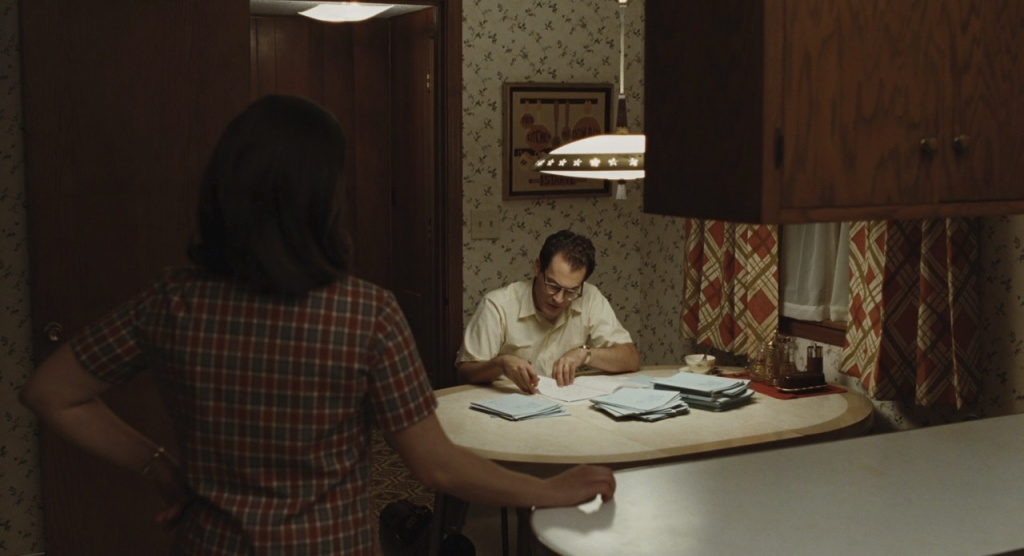
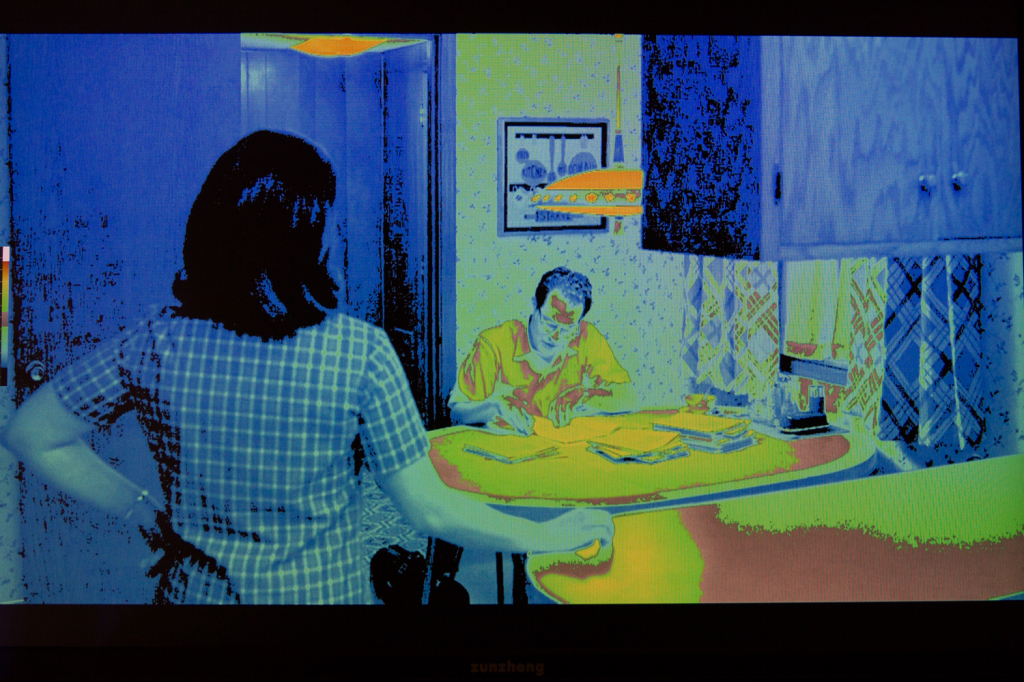
Y'all tin see that the Key light is coming from the light over the table. The light is the hottest affair in the frame. It is 2.v stops over. The Table itself is 2 stops over. The main graphic symbol seated at the table is at Fundamental for his skin and his face fades into nigh 1 stop under. The background is all ii-iv stops nether which helps to focus the attention of the view. Nosotros aren't looking at anything hear but ratios recall.
So at present if I like this scene I would know that I need my table at two stops over, my talent at fundamental, and my background hovering effectually 2 -4 stops nether.
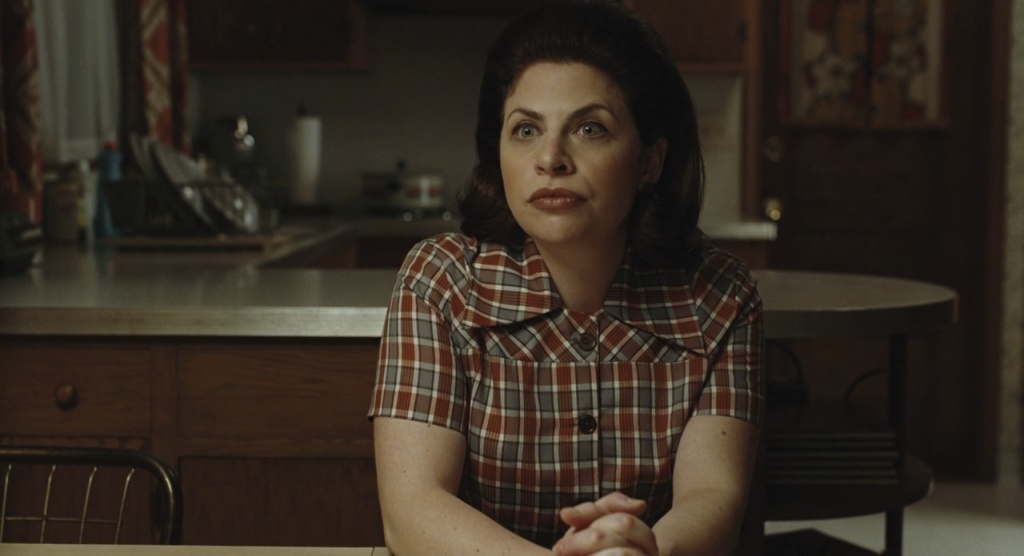
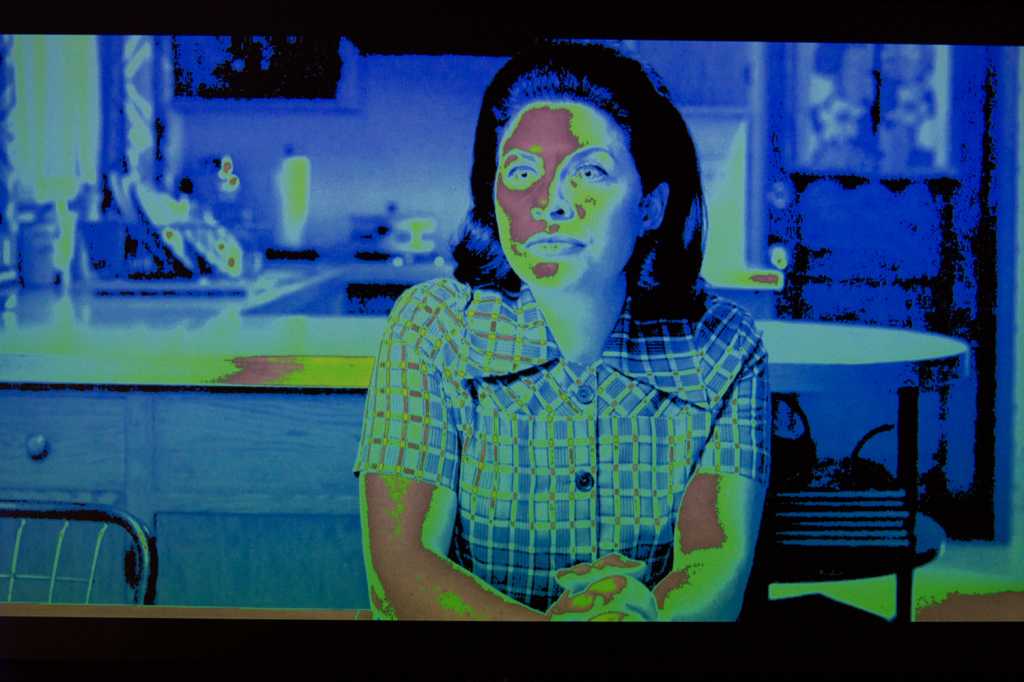
Same scene unlike shot.
Here yous can see the actresses skin is at Key and the key to fill up ratio is 2.5:ane. If you were in that location on fix it would read say T2.0 on her central side and T0.7 ane/2. You can also see how the calorie-free wraps effectually the fill side and gradually falls off to her hair that is 4 stops under. You tin also see that at that place is nothing in the background over Key. Everything is betwixt 1 and 4 stops nether.
Now y'all have to recall that this is all mail service "course" simply that doesn't really matter. You become the idea. The closer you tin can get these ratios on fix the meliorate your results will be.
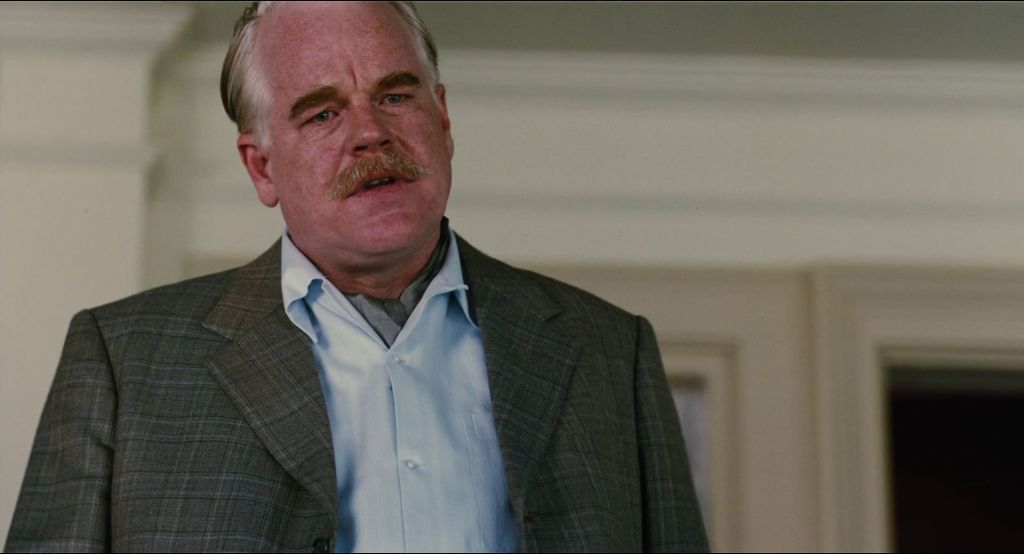
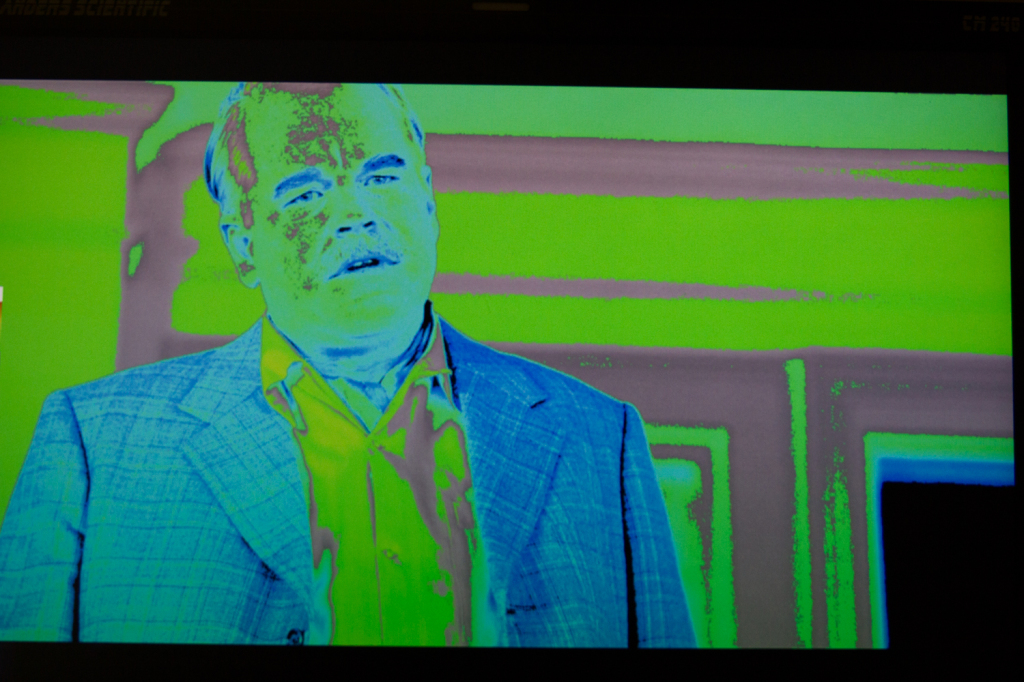
Here is a shot from the picture show The Principal.
The shot is under a porch EXT day. You can see that PSH's head is at Key.
The fill ratio on his camera correct side of his head is about 1.five stops under. The background is either at Central or one stop nether. His jacket is ii-three stops under Key.
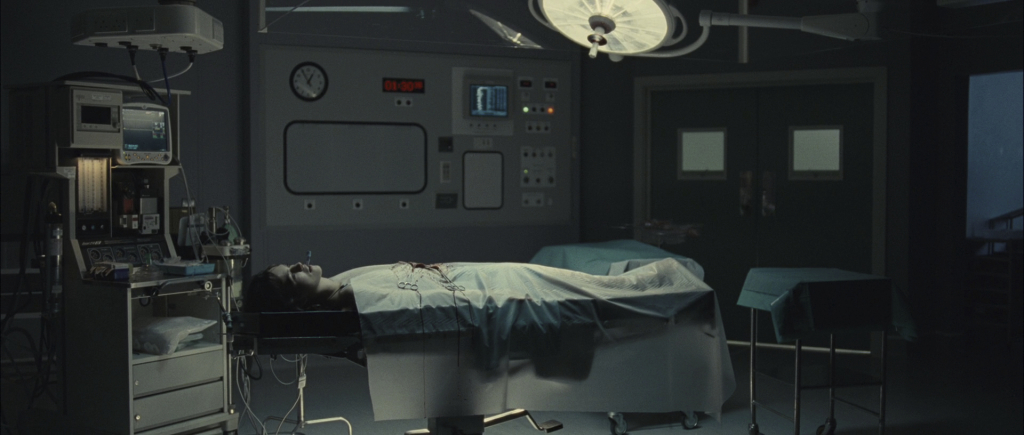
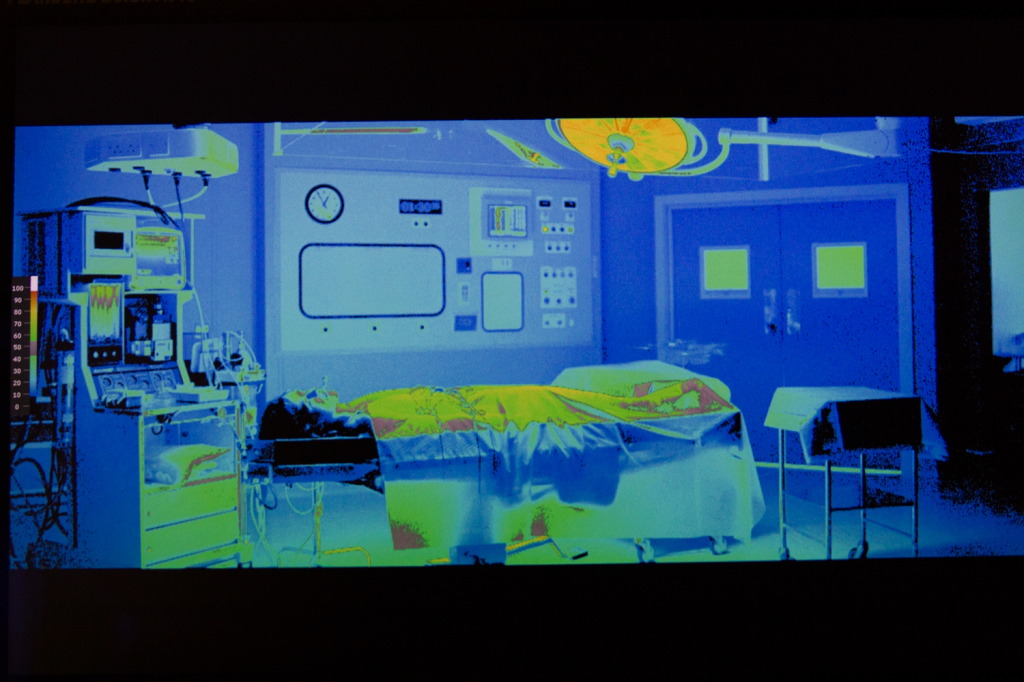
This is a bully sequence from Never Allow Me Get .
I really like this dim environment and this shows only how accurate y'all can get with the false color modes.
In this wide you tin encounter the skin tone of the adult female laying on the stretcher is at Key. The cover on her is one to two stop over.
The fall off on the light from above ways the background gradually melts into ane cease under, then two stops under, then three stops under. I actually like the look of the 2-three stops under stuff.
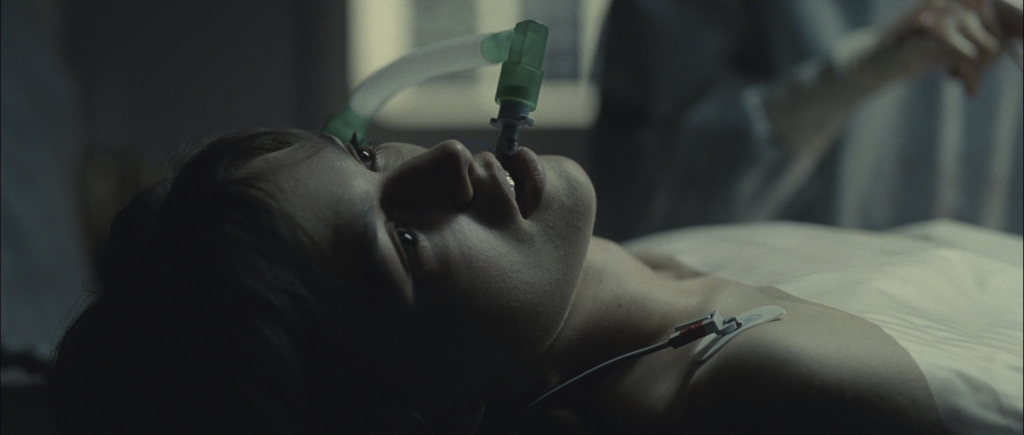
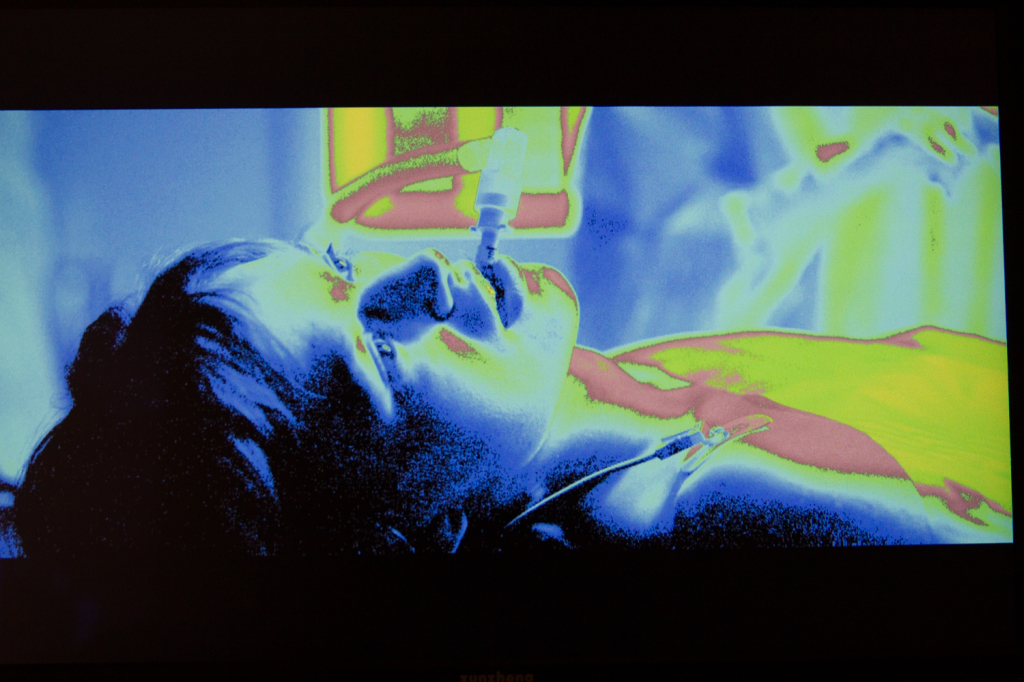
In the close up you lot tin over again come across the fall off and the K:F ratio. The height side is at Primal and the Fill falls off from 2-4 stops under fairly quickly.
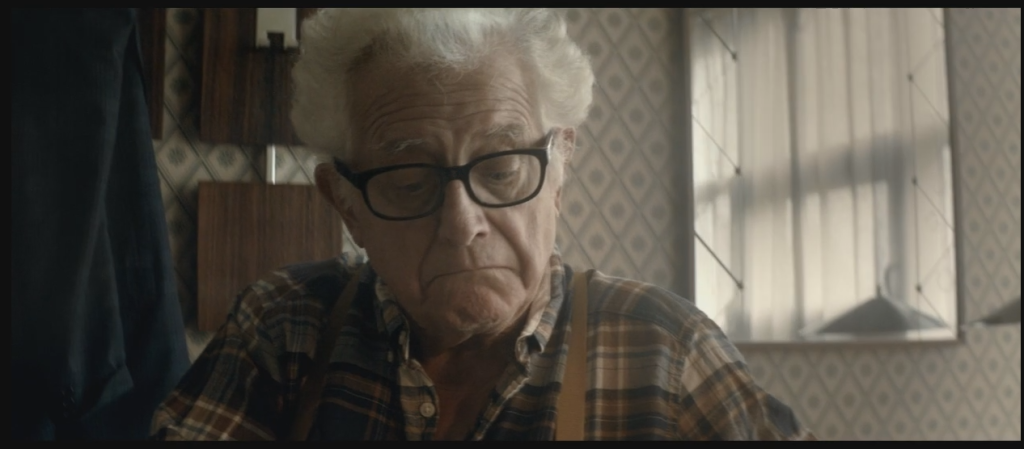
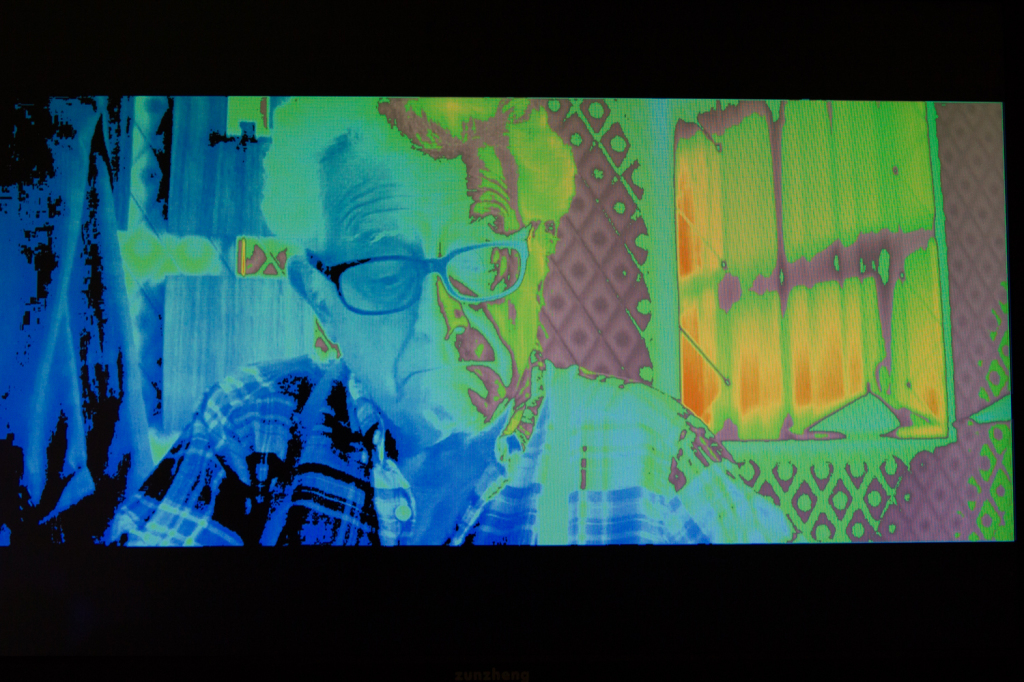
Here is an INT close upward that I quite similar the expect of. You can see that the Key to Fill is 3:1. The K:B is Key to 2 stops under with a splash of light in the reflection.
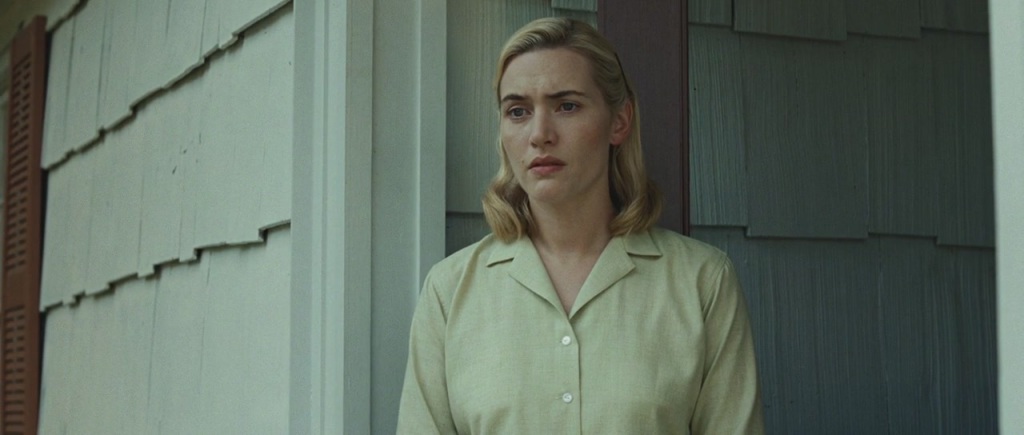
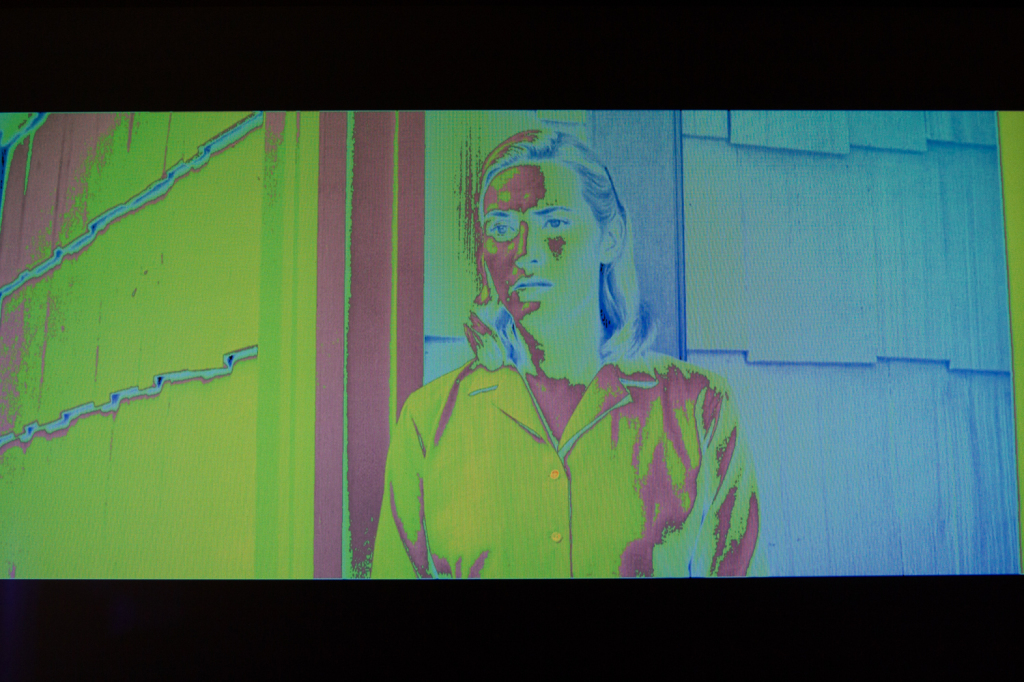
In this concluding case you can run across Roger Deakins keeping everything very tight and well exposed to provide shape and only the right amount of contrast.
The woman'due south central side is at Key and the lite is simply kissing her camera right cheek. The Grand:F ratio is two:1 with fall off warpping around to 3:one. You can likewise meet that nil in the background gets too far over Key significant at that place are no bright spots to draw the viewers attention away from the main grapheme.
Your Mileage May Vary
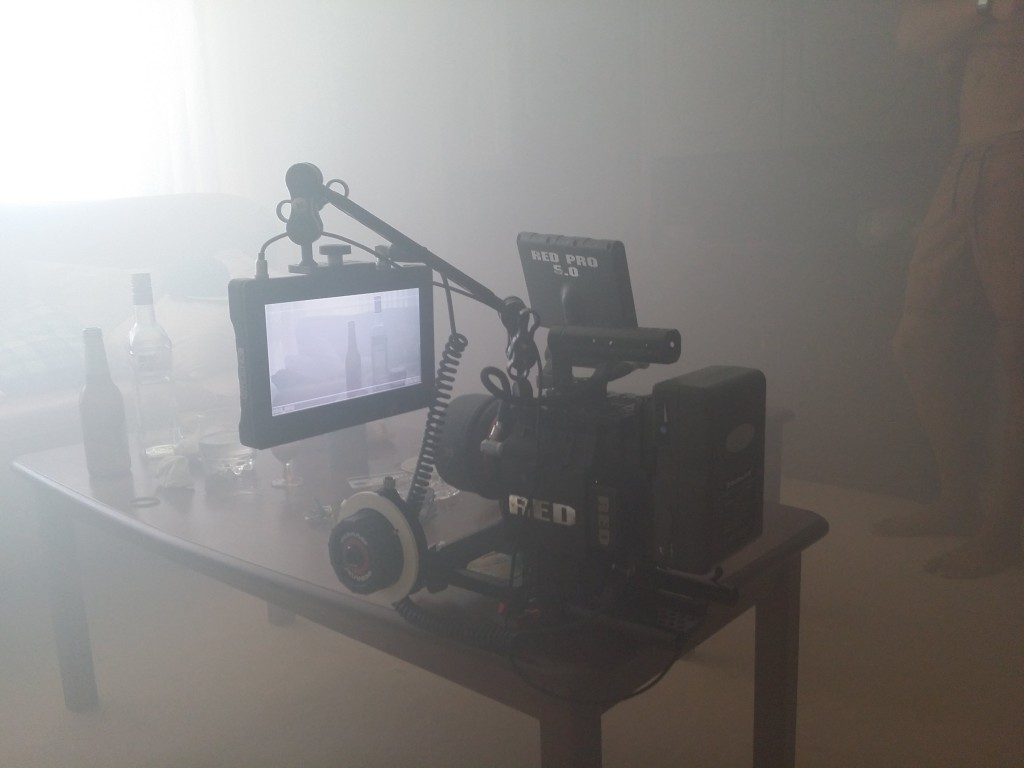
This is just what works for me. I like seeing the patterns emerge in images I like. In film the ratios are adequately consistent throughtout a project. nine/x th background is a stop or two under. The Thou:F for miles is larger than the K:F for females. It is fun to spot the differences and this method has drastically improved my understanding of what makes a pleasing image.
The tools I use I practise so because I had them on hand. You lot can practise the same method using other tools as well. You don't need Jing, you don't need Resolve, and you don't need a FSI monitor. Whatsoever monitor with simulated color you can programme will work. If you have an Odyssey 7 or 7Q that will work bully. If you accept a SmallHD you tin can utilise their false color besides. There are lots of ways to put this method into practice.
The other benefit of studying images like this is you tin so commencement to extrapolate other things peak DPs are doing. Y'all tin see when a Key light is soft vs hard. Y'all can meet how they feather out practical lights or how they add a bit of brightenss and contrast to an prototype to brand certain point of interest in the frame.
Ways lead on to ways.
Side Note: If you do use Resolve it is likewise fun to see what your favorite shots look similar at different exposure levels. Play around and bring upwards or pull down the shots to see what a difference exposure levels and ratios make on an paradigm. Have Fun!
Hopefully you lot tin can take this method and put it into action similar I accept. It has helped me out numerous times and has made me a better cinematographer.
If you have whatever questions please leave them in the comments.
Source: http://wanderingdp.com/cinematography/cinematography-school-lighting-ratios-101/
Posted by: garciagratin.blogspot.com

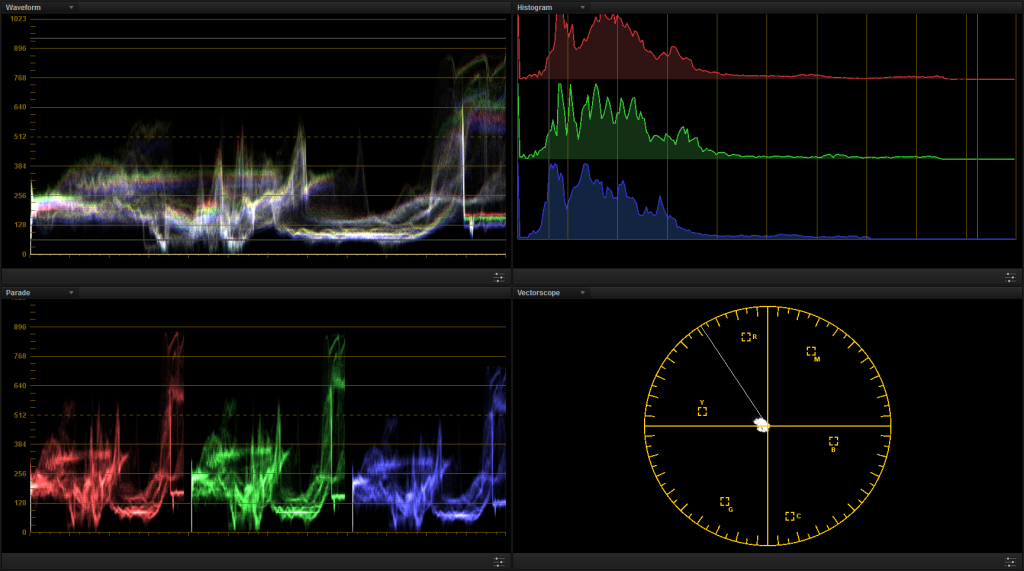
0 Response to "How To Rate Camera Work And Lighting"
Post a Comment